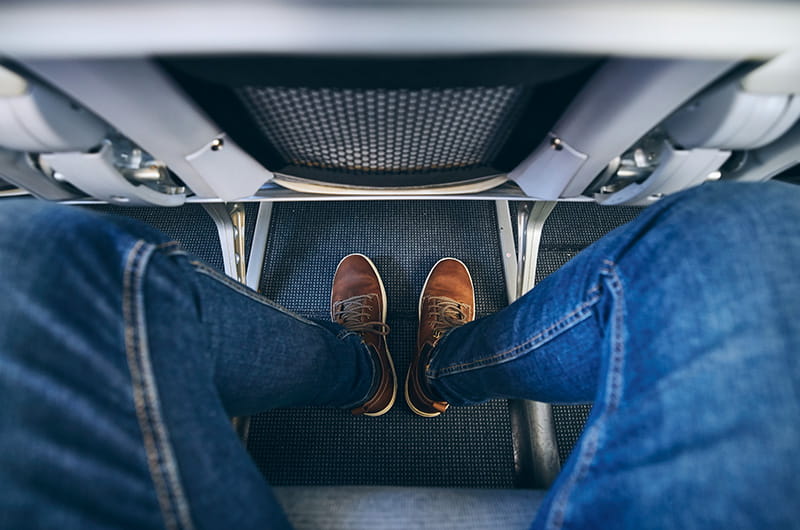Are compression socks necessary for this summer’s vacation?

If you’ve ever flown on a long-haul flight, you’ve probably heard warnings about blood clots — and maybe even been told to wear compression socks.
But do these tight, stretchy socks actually make a difference? So far, the scientific evidence is inconclusive for most passengers.
Compression socks — also known as graduated compression stockings — are generally considered safe. They apply firm pressure at the ankles that gradually lessens up the leg. This design encourages blood flow by helping veins push blood back toward the heart, potentially reducing clot formation.
Passengers turn to them in hopes of reducing the risk of deep vein thrombosis (DVT), a clot that develops in a large vein, often in the leg.
DVT affected around 666,000 people in the U.S. in 2020, according to the American Heart Association. Pulmonary embolism (PE), where a clot travels to the lungs, led to another 432,000 hospitalizations. Together, these conditions — called venous thromboembolism (VTE) — were linked to nearly 81,000 deaths in 2021.
Being on a long flight can increase the risk of VTE by 1.5 to 4 times, according to a 2021 Cochrane review of health care evidence. Even so, the overall chance remains very low. For instance, a 2007 study estimated severe pulmonary embolism occurs in about 4.8 per million flights over 12 hours, and the risk of DVT within four weeks after a flight of at least four hours is roughly 1 in 4,600.
Dr. Eri Fukaya, a vascular specialist at Stanford University, describes flying as a “perfect storm” for clots when someone has risk factors. Older age, smoking, obesity, family history, recent cancer treatment and hormone use all increase vulnerability. She uses the analogy of a bucket filling with water — if it’s nearly full due to these factors, a flight might tip it over.
Sitting still for long periods and dehydration — common on flights — also contribute to clot risk by slowing blood flow and thickening the blood.
But whether the socks work to help mitigate that problem is still a question searching for an answer. Because severe clots from flying are rare, it’s difficult to study the effectiveness of compression socks. A 2022 study focused on pregnant and postpartum women found a slightly higher risk of VTE in those who flew, but the difference was minimal (0.07% vs. 0.05%).
The Cochrane review analyzed data from nearly 3,000 people and found strong evidence that compression stockings reduce the risk of symptomless DVT on flights longer than four hours. However, they couldn’t conclude if socks reduce serious outcomes such as pulmonary embolism or death, since no such cases occurred in the trials.
The American Society of Hematology recommends compression socks only for high-risk individuals on long flights, not for low-risk travelers on short trips.
Dr. Fukaya said she personally wears compression socks regularly, finding they help reduce leg swelling and improve comfort. She recommends experimenting with different levels of compression — mild, medium or strong to see what feels best.
Dr. Joshua Beckman, a vascular medicine expert at UT Southwestern Medical Center in Dallas, said that while the benefit of compression socks for healthy travelers is unclear, if a health care professional advises wearing them, you should follow that guidance.
So, should you pack compression socks? Sure, getting up and moving every couple of hours, staying well-hydrated and doing calf exercises while seated, such as ankle circles and toe wiggles, to keep blood flowing is probably more impactful, said Dr. Beckman.
“There are many things to consider for a healthy trip,” Dr. Beckman said, “and it’s important not to worry about things that might not matter much.”





